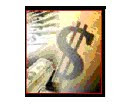 Ireland is the latest to lose its financial bearings in the European Union. This comes with distinction, as the government adamantly denied that they had any difficulty this past Summer. With their tail between their legs, the Irish Government is forced to accept the largest international bailout to date. Last Thursday was the first time the finance minister acknowledged needing help. It is widely believed that the sour loans lead to the huge financial losses that nearly toppled the Island.
Ireland is the latest to lose its financial bearings in the European Union. This comes with distinction, as the government adamantly denied that they had any difficulty this past Summer. With their tail between their legs, the Irish Government is forced to accept the largest international bailout to date. Last Thursday was the first time the finance minister acknowledged needing help. It is widely believed that the sour loans lead to the huge financial losses that nearly toppled the Island.  Much needed help is on the way, amid fierce concerns for the impact it will have on the EU, and Spain in particular. The IMF is prepared to package over €110 billion Euros as bailout for Ireland. Where does that leave Spain? Spain has a greater need for the financial bailout than Ireland or Greece. Here is the dilemma, once the IMF bails out Ireland, the €350 billion Euros needed to salvage Spain’s debt and deficits will exceed what is available. There must be some way to avoid this train wreck. Perhaps the IMF could come up with an alternative; for instance; The bailout could be done on a drawdown schedule. The IMF could provide Ireland with bailout installments over time. This might give them a chance to help Spain, and work toward soliciting additional funds to meet Ireland's bailout installments that are due later in the payment schedule. Just a thought.
Much needed help is on the way, amid fierce concerns for the impact it will have on the EU, and Spain in particular. The IMF is prepared to package over €110 billion Euros as bailout for Ireland. Where does that leave Spain? Spain has a greater need for the financial bailout than Ireland or Greece. Here is the dilemma, once the IMF bails out Ireland, the €350 billion Euros needed to salvage Spain’s debt and deficits will exceed what is available. There must be some way to avoid this train wreck. Perhaps the IMF could come up with an alternative; for instance; The bailout could be done on a drawdown schedule. The IMF could provide Ireland with bailout installments over time. This might give them a chance to help Spain, and work toward soliciting additional funds to meet Ireland's bailout installments that are due later in the payment schedule. Just a thought.In the meantime, in anticipation of the Ireland bailout, Portugal and Spain’s bond yields have increased nearly 12 basis points. That is only the beginning. The list below serves as a reminder as to just how steep these bailouts are for the EU.
-Greece bailout: €110 billion Euro Greece bailout
-Ireland’s bailout: €113 billion Euros
-Spain Needs: €350-billion Euros
 Portugal is reportedly the next in line for a bailout, while the IMF is looking at Belgium as another EU member in financial distress. Although, an official from one of the leading EU countries pointed out that Belgium’s debt is largely internal, so it's not at all in the same boat as Ireland or Spain. Belgium’s financial problems will not have as much of an impact on international investors.
Portugal is reportedly the next in line for a bailout, while the IMF is looking at Belgium as another EU member in financial distress. Although, an official from one of the leading EU countries pointed out that Belgium’s debt is largely internal, so it's not at all in the same boat as Ireland or Spain. Belgium’s financial problems will not have as much of an impact on international investors.The Euro has declined to a two-month low against the dollar, as crisis continues to unfold. I will be closely watching to see what solutions are put forth from the authorities at IMF, and how the EU will wiggles out of this one. America's economic stability is still at large, while economies around globe also struggle to climb out of the valley of a deep recession.
K. Reilly
Cohn-Reilly Report




















